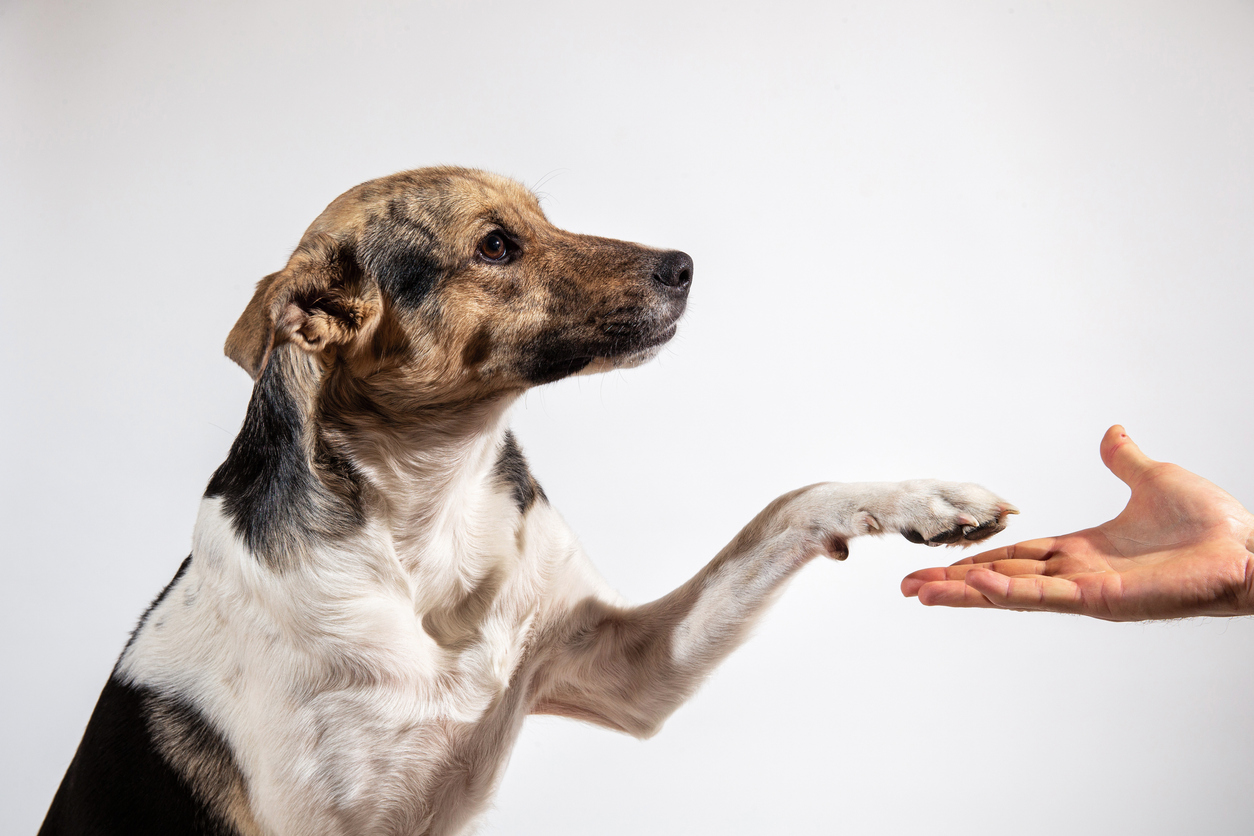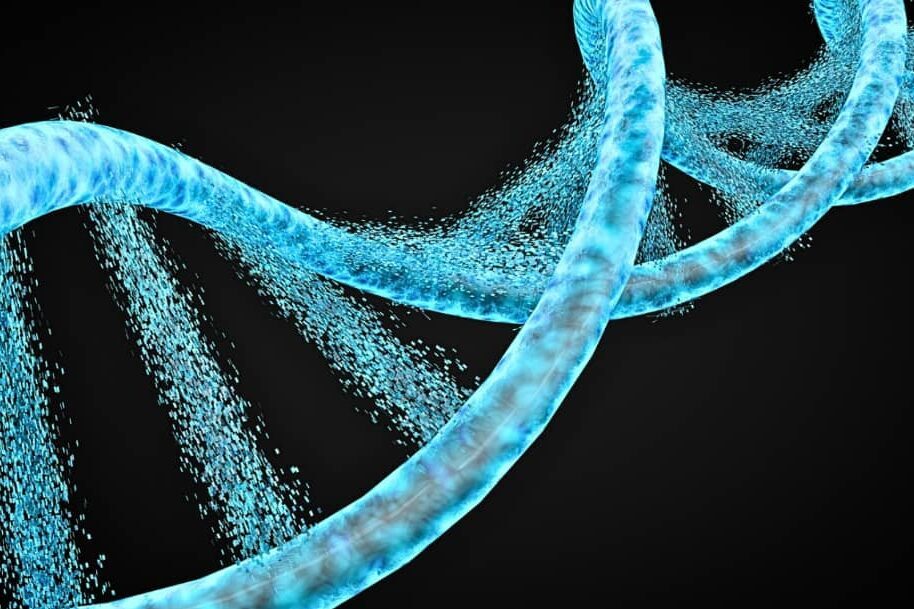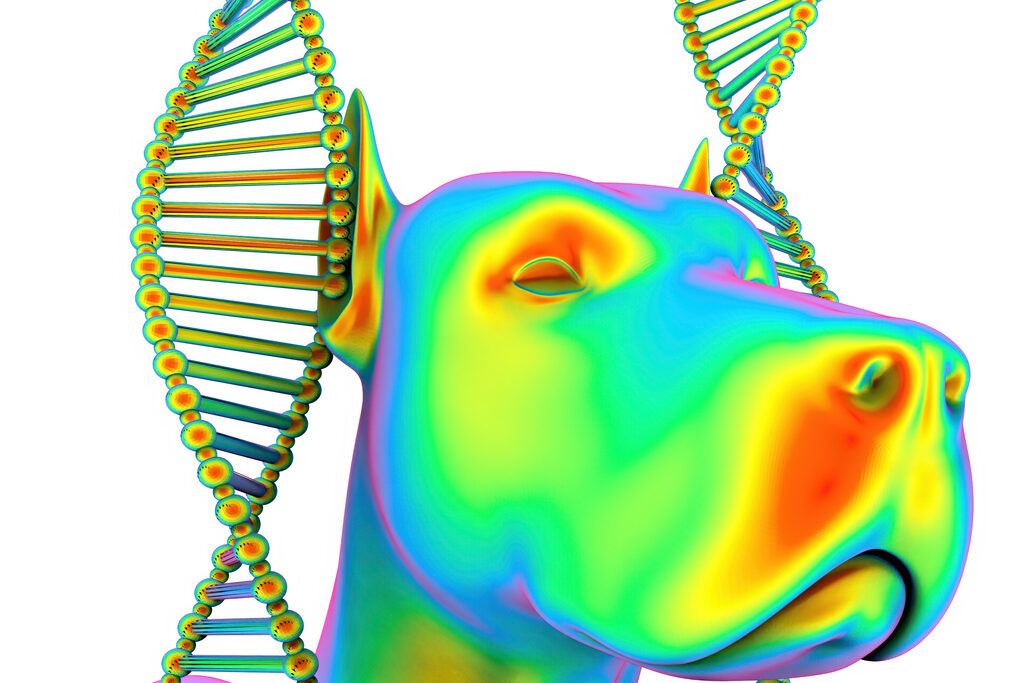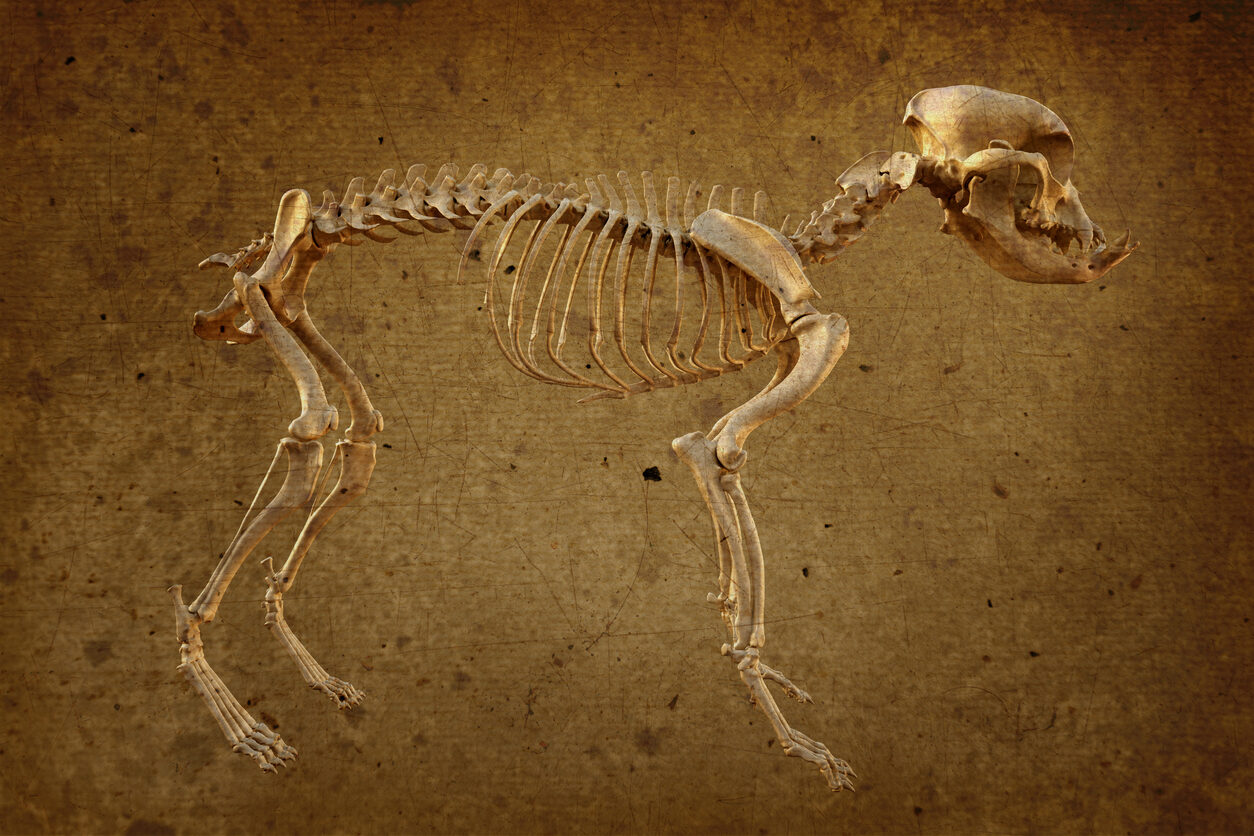Understanding Dog DNA

The study of dog DNA has provided an unexpected window into human evolution. As dogs evolved alongside humans, their genes offer valuable insights into how domestication has shaped not only the animals themselves but also human societies. The domestication of dogs began thousands of years ago, and the genetic traits that we see in modern dogs reflect the environments and roles that dogs have had in our lives. From the genes that determine coat color to those influencing behavior, these genetic traits offer a glimpse into the mutual influence between humans and their canine companions.
What is truly fascinating is how the genetic makeup of dogs can reveal information about the environments where ancient human societies lived. For instance, certain breeds with specific genetic traits were likely bred for particular tasks, such as herding, guarding, or hunting. These roles were deeply intertwined with human needs and survival, influencing the genes passed down through generations. Today, scientists use dog DNA to trace patterns of human migration, uncovering stories of how our ancestors and their dogs journeyed across continents, adapting to new climates, landscapes, and ways of life. Dog DNA research not only highlights the deep bond between dogs and humans but also serves as a key to understanding our evolutionary history.
The Link Between Dog Domestication and Human Social Structures

When we examine the genetic evolution of dogs, we also see a fascinating parallel with the development of human social structures. The domestication of dogs wasn’t just about creating pets; it was a reflection of the changing roles humans had in society. Early humans used dogs as hunting partners, guards, and companions, leading to the development of complex relationships that mirrored the growth of human communities. The genetic traits that have been passed down in dogs often align with the roles they played in early societies, whether in a village or in the context of early nomadic groups.
Dog DNA research also reveals how the selection of specific traits, such as loyalty or trainability, was essential for developing dogs that could integrate into human life. These traits were crucial for the early cooperation between dogs and humans. In fact, studies show that early human settlements likely chose dogs with specific characteristics, much like the way human communities selected partners based on skill or social standing. This cooperation between species laid the foundation for the complex social structures we have today, where pets, especially dogs, continue to play important roles in human lives. The influence of dog DNA on the evolution of human society is an example of how animals have shaped our world, both biologically and socially.
Canine Intelligence and Its Connection to Human Cognition

Dog DNA research has revealed that the intelligence of dogs may not be as distinct from human cognition as we once thought. Recent studies into dog genetics show a fascinating overlap in the genes that govern cognitive functions in both dogs and humans. For example, studies on dogs have found that they share several genes related to memory, problem-solving, and social cognition, traits that are critical to human intelligence. In fact, dogs are one of the few species capable of interpreting human gestures, such as pointing or eye contact, which suggests that their cognitive abilities were shaped by thousands of years of cohabitation with humans.
This shared cognitive ability between humans and dogs highlights how domestication has influenced both species. The ability of dogs to learn from and communicate with humans may be rooted in this genetic overlap, as dogs evolved to become more attuned to human behavior. These genetic changes may have been selected for because of the mutual benefit they provided in early human-dog relationships. As humans evolved, the cognitive traits that allowed for better cooperation with dogs also helped in human social and cognitive development. Essentially, dogs may have played a role in shaping human cognitive abilities, and the genetic traces of this connection continue to be studied today.
How Dog Breeds Reveal the Migration Patterns of Early Humans

Dog breeds aren’t just markers of physical traits; they are genetic records of ancient. human migrations and trade routes. Each breed of dog carries genetic traces that tell the story of the regions where they were bred and the people who developed them. By analyzing dog DNA, scientists have been able to map out human migration patterns, from the spread of agriculture in the Middle East to the expansion of nomadic tribes in Central Asia. In fact, some dog breeds, such as the Basenji, have been linked to specific regions, offering insight into the historical movements of human populations.
The ancient relationship between humans and dogs is reflected in the diverse breeds we see today. Some breeds, like the Siberian Husky, have adapted to cold environments, while others, like the Greyhound, are a product of ancient civilizations’ need for speed and agility in hunting. The genetic markers found in these breeds help trace the routes of human migrations across continents, revealing a complex web of connections between humans and their canine companions. By studying these dog breeds, scientists can uncover previously hidden aspects of human history, showing how intertwined our evolution is with that of our furry friends.
Dog DNA and Human Disease

Onase, and hip dysplasia. In fact, studying these shared genetic markers in dogs has led to significant advancements in human medicine. Certain breeds, such as the Boxer and Golden Retriever, are particularly prone to specific cancers, and by studying these conditions in dogs, researchers have been able to learn more about how these diseases develop and affect humans.
This genetic similarity is not just beneficial for understanding diseases in dogs but also for improving treatments for humans. Because dogs and humans often share similar environmental factors, the study of canine diseases can provide valuable insight into the human genetic response to illness. Additionally, studying how dogs react to certain medications can help improve human treatments for conditions like arthritis or epilepsy. The genetic link between dogs and humans in terms of health is a testament to how closely connected the two species are, further illustrating the role that dogs have played in shaping human evolution and well-being.
Genetic Clues to Human-Dog Communication

One of the most remarkable aspects of the relationship between humans and dogs is their ability to communicate, despite being different species. Research into dog genetics has shown that dogs have evolved to understand human emotions and intentions through a mix of genetic and environmental factors. Unlike most animals, dogs have the unique ability to read human facial expressions, body language, and even tone of voice. These traits are deeply rooted in their DNA and are thought to have developed as a result of domestication, where survival often depended on understanding human cues.
The genes that influence this extraordinary ability to communicate with humans are shared by both dogs and humans, revealing an evolutionary bond that goes beyond companionship. Scientists have discovered that dogs have specialized regions in their brains that process social cues from humans, which mirrors the way humans process social information. This genetic development has allowed dogs to adapt to a world created by humans, and as a result, they’ve become incredibly attuned to our behaviors. In return, humans have come to view dogs not only as pets but as intuitive, emotional beings capable of understanding us better than most other animals.
The Genetic Basis of Loyalty

Loyalty is often cited as one of the defining traits of a dog, but did you know that this characteristic may be hardwired into their genetic makeup? Studies have shown that certain genes are responsible for regulating behaviors like attachment and bonding in dogs. These genes, particularly those related to oxytocin, the “love hormone,” play a crucial role in the emotional bond between dogs and their human companions. When dogs gaze into their owners’ eyes, it triggers the release of oxytocin, fostering a sense of trust and affection, similar to the bond between human parents and their children.
This genetic predisposition for loyalty likely evolved over thousands of years of cohabitation with humans. Early on, humans likely selected dogs for their ability to form strong emotional connections, ensuring that the animals could serve as reliable companions and protectors. The genetic basis for loyalty also helps explain why dogs are so sensitive to their human owners’ emotions, often responding to stress, sadness, or happiness with comforting behaviors. This trait has not only made dogs ideal companions but has also helped them thrive in human-centered environments, where their emotional intelligence and loyalty are highly valued.
Tracking the Evolution of Dog Breeds Through Genetic Markers

Today’s diverse dog breeds have evolved from a common ancestor, and by examining their genetic markers, scientists can track the evolutionary paths that led to the wide range of breeds we see today. Early dogs were likely bred for specific purposes, such as herding, guarding, or hunting, and their genetic makeup reflects these specialized roles. Over time, human preferences for certain physical and behavioral traits led to the development of distinct breeds, each with unique characteristics.
Genetic research has revealed the deep history encoded in a dog’s DNA. For example, the genetic markers found in Greyhounds show that these dogs were bred for speed, while retrievers have genes that enhance their ability to work with humans in water-related tasks. Through DNA sequencing, scientists can also trace the migration patterns of early human societies, as dogs traveled with them across continents, adapting to new environments and tasks along the way. The diversity of dog breeds, from the tiny Chihuahua to the giant Great Dane, is a testament to the influence humans have had on their evolution, guided by both necessity and preference.
The Role of Dogs in Shaping Human Genetic Diversity

While much of the focus on genetic evolution tends to be on human genetics, the story of dog evolution can also shed light on human genetic diversity. Dogs have played a pivotal role in shaping human populations, not just by being companions but by influencing the way humans have adapted to their environments. For example, certain dog breeds were developed in regions with specific environmental challenges, and the genetic traits of these dogs helped humans adapt to these conditions as well.
In some cases, dogs were used as tools for hunting, herding, or protection, which directly impacted the survival and reproduction of human populations. The presence of dogs in ancient human communities likely played a role in shaping social structures, health practices, and even genetic traits. By studying the genetic traits of ancient dog breeds, scientists can gain insights into how human populations adapted to their surroundings. This reciprocal relationship between human and dog evolution highlights the shared journey of survival and adaptation, with dogs influencing human genetic diversity in ways we are only beginning to understand.
Dogs and the Future of Human Evolution

As we continue to study dog DNA, it’s not just the past and present we can learn about — we also gain insights into the future of human evolution. The genetic traits of dogs can provide valuable clues about how domesticated animals might influence human genetics moving forward. In particular, as more people keep dogs as pets, the genetic interplay between humans and dogs may deepen, potentially affecting our health, behavior, and even our genetics.
For example, some studies suggest that exposure to dogs and other animals during childhood can help strengthen the human immune system, providing a genetic advantage in combating diseases. Additionally, as dogs continue to evolve in response to human environments, they may also help humans adapt to urban living and changing climates. As genetic technologies advance, we may be able to track even more specific genetic connections between humans and dogs, allowing us to understand not just the history of our relationship with these animals but also the potential future evolution of both species. The bond between humans and dogs is not just a product of the past — it’s a living, evolving connection that could continue to shape our genetic futures.
Dog DNA and the Mystery of Ancient Canine Populations

Dog DNA has not only illuminated the relationships between modern breeds but also provided clues to the mystery of ancient canine populations. Researchers have uncovered traces of long-extinct dog breeds by analyzing ancient dog remains, allowing them to reconstruct the genetic history of domesticated dogs. These ancient dogs lived alongside humans in various regions and played crucial roles in survival, serving as hunting companions, guardians, and even spiritual figures.
The study of ancient dog DNA has helped reveal the genetic diversity that once existed among early dog populations. For example, studies of prehistoric dogs found in Europe and Asia show that many of these ancient dogs shared genetic markers with today’s working breeds, suggesting a long history of selective breeding for specific traits. However, over time, as human societies evolved and migrations occurred, many of these early breeds were replaced or interbred with other dogs, leading to the modern canine population we recognize today. This genetic journey offers a window into the past, shedding light on the ancient relationship between humans and dogs.
The Genetic Impact of Urbanization on Dog Breeds

As humans have moved into increasingly urbanized environments, the genetic makeup of dogs has also been influenced by these changes. Urban living has led to shifts in the roles that dogs play in society, with many now serving primarily as companions rather than workers. As a result, certain traits, like docility and adaptability to smaller living spaces, have become more prevalent in city-dwelling dog breeds.
Urbanization has also created new challenges for dog breeders and owners, such as the need for dogs that can adapt to noise, confined spaces, and less access to open spaces. Genetic research has begun to examine how urbanization may be influencing the genetic traits of dogs, with some studies indicating that dogs in cities may be evolving faster than those in rural areas. For example, dogs that are better able to tolerate noise or navigate crowded spaces may be more likely to thrive in an urban environment, and these traits may become more common in future generations. The shift toward urban living is not just shaping human society but also playing a significant role in the ongoing evolution of our canine companions.
The Role of Genetic Engineering in Shaping the Future of Dogs

With the rise of genetic engineering, scientists are beginning to explore how we might use technology to influence the genetic makeup of dogs in the future. While this raises ethical questions, the potential to modify genes in dogs could lead to new advancements in the treatment of hereditary diseases or the development of dogs with specific traits that benefit humans. Already, genetic research is being used to identify mutations that cause genetic disorders in certain breeds, with the goal of eliminating these conditions in future generations.
The future of genetic engineering in dogs could also extend beyond disease prevention. Some experts suggest that we could potentially create dogs with enhanced traits, such as improved intelligence, longer lifespans, or the ability to better serve in specialized roles, like therapy or service dogs. However, this possibility also raises concerns about the ethical implications of “designing” dogs. The balance between utilizing genetic engineering to improve health and the risks of manipulating a species for convenience will be a topic of intense debate as technology advances. Regardless of the outcome, the continued study of dog DNA will undoubtedly influence the future of canine evolution, opening up new possibilities for both dogs and the humans who rely on them of the most unexpected areas of overlap between dog and human DNA lies in the study of diseases. Dogs share many of the same genetic disorders as humans, such as cancer, heart diseases amongst other diseases.
The story The Great Pet DNA Boom: What Your Dog’s Genes Reveal About Human Evolution was first published on DailyFetch.


